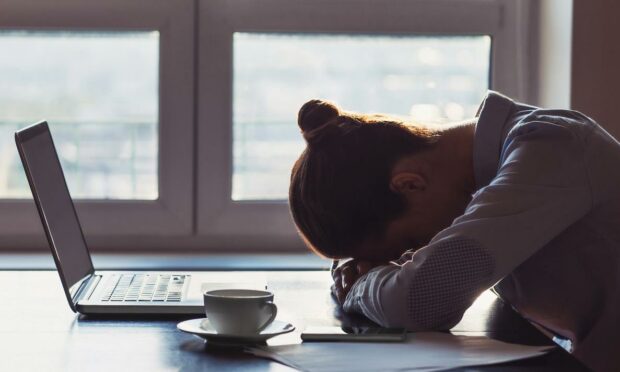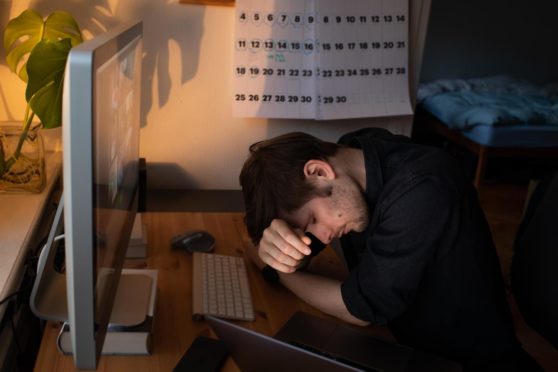More than a year of virtual meetings and catch-ups has meant more time spent looking at our own faces than ever before. Many believe this is causing a rise in poor body image. Our expert share his advice for those struggling.
We all have parts of our body we don’t love, or days where we don’t feel good about ourselves.
It is a normal part of living in the digital age of social media, filters and airbrushing.
But when thoughts and worries of our appearance start to take over and affect other areas of our lives, this can have a huge impact on our physical and mental health.
What is body dysmorphia?
Body dysmorphic disorder (BDD) is an anxiety condition that affects the way we feel about our physical appearance.
It is characterised by a preoccupation with perceived flaws in appearance, which to others seem normal or unnoticeable.
How do I know if have it?
You could be struggling with BDD if you feel heightened and recurring anxiety about your appearance.
Or if you’re adapting your life to accommodate your anxieties – such as avoiding certain social situations or your reflection in the mirror.
With video conferencing acting as one of the primary communication methods throughout lockdown, the risk of developing BDD is a growing concern – especially for those who were struggling with poor body image before the pandemic.
‘It can be a real source of torment’
Professor Ewan Gillon is a chartered psychologist and clinical director of First Psychology Scotland, with centres in both Dundee and Perth.
Prof Gillon explains: “Body dysmorphia is a form of anxiety and it means we worry excessively over how we look.
“We all perhaps have bits of our bodies we feel uncomfortable with, but it’s more challenging than that for people who really struggle with it.
“It can be a real source of torment, resulting in a whole range of coping strategies or ways of expressing that anxiety.
“Ultimately if you have BDD it can be challenging. You’re dealing with someone who is really quite distressed about how they look and that’s impacting their life to a significant degree.
“You become preoccupied with it and then, of course, you lose perspective.
“You start to imagine it’s worse than it really is and other people might not notice it whereas you think it’s the most obvious, awful thing in the world.”
Has Zoom led to rise in demand for plastic surgery?
With so many of us working from home and unable to see friends or family since March 2020, keeping in touch has meant using video conferencing platforms such as Zoom and Teams.
While this has helped us maintain relationships and enabled us to work effectively, it has caused other problems.
When we have a conversation in person, we’re focused on someone else’s face, body language and expressions.
Spending so much time on video chatting platforms means we’re constantly confronted with our own faces – what we look like when we laugh, smile, frown.
Indeed for some, this has led to an increased demand for medical procedures and plastic surgery to alter their appearance during lockdown.
Prof Gillon continues: “Two things happen when you have a lot of computer-mediated interaction.
“Firstly, we’re able to control our appearance more fully than we’d normally be able to in social situations.
“If we worry about our bodies or the way we look, we might develop systems to help us feel more comfortable on the screen.
“We might angle the camera in a particular way or use certain types of lighting.
“That means people are being provided with a very controlled view of who we are, so when we go back out into the real world, we can’t control that to the same degree and that can, for some people, result in a lot of anxiety.
“Similarly, we are constantly being fed other people’s controlled images. Even on Zoom people create a particular image of themselves.
“We’re not seeing the full person, but rather a snapshot of what they want us to see.”
Risk factors
Some may consider BDD mere vanity or insecurity, but it is a complex mental health condition and can be linked to obsessive compulsive disorder and even eating disorders.
Prof Gillon explains: “Eating is one of the ways we relate to our bodies and we can control our bodies through food.
“People with BDD do at times present the risk of developing an eating disorder.
It is an incredibly brave thing to speak out and ask for support, and if it’s something you’re anxious about, you can speak to our Helpline about your worries.
— Beat (@beatED) June 24, 2021
“You will often find there is a relationship between someone’s preoccupation with their body and their relationship with food.
“One of the things we know about BDD is people tend to identify it late which means it’s often quite significantly developed by the time they reach out for support.
“I’d encourage anyone who is struggling with worries or concerns to talk to their doctor. It’s important to seek help if you need it because the earlier you do so, the easier it is to address it.”
Support
If you’re struggling with BDD as a result of time spent on Zoom or Teams, reaching out to your employer to discuss adjustments can help.
Prof Gillon says: “If you’re struggling with your camera to the point where you feel you can’t participate or engage with work in the way you’re expected to, that’s a problem you need to discuss with your employer.
“In that situation, you’re having to adapt your life which may be preventing you from being the person you want to be at work.
“Employers want to support their employees. An employer may be quite happy if someone prefers to have their camera off.
“Everyone should have a right to make those decisions and no one should feel forced or coerced into presenting themselves in a particular way.
“However, this should be on the proviso of understanding that this person is feeling very anxious and we wouldn’t want to just go along with that being okay – we’d want to be offering some support.”
Treatments such as cognitive behavioural therapy (CBT) and counselling also can have a positive impact and seeking help from your GP is the first port of call.
Living in a digital age, problems with body image are increasing. But reaching out for support is the first step on the road to recovery.
Beat
www.beateatingdisorders.org.uk
0808 801 0677
Body Dysmorphic Disorder Foundation
www.bddfoundation.org


